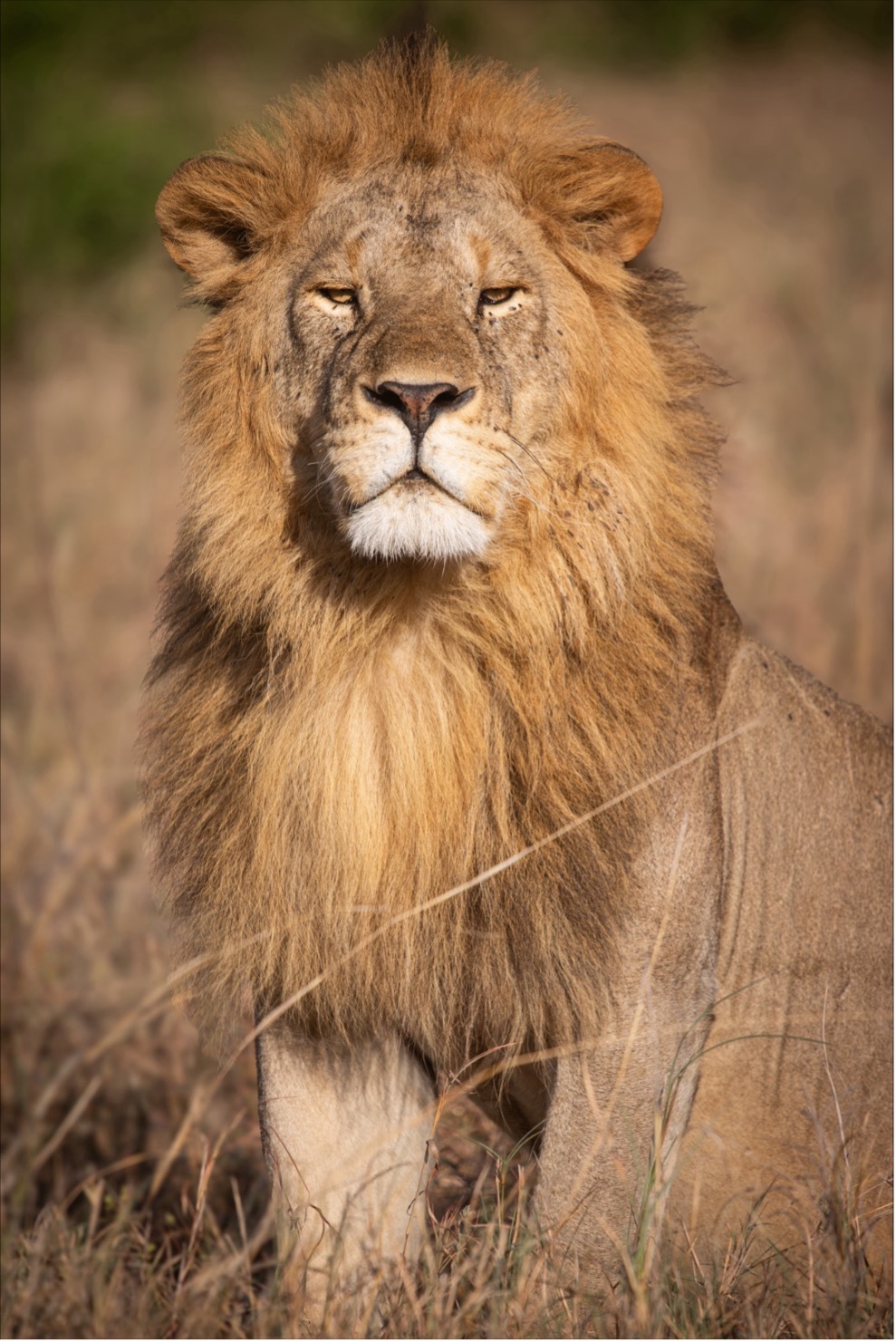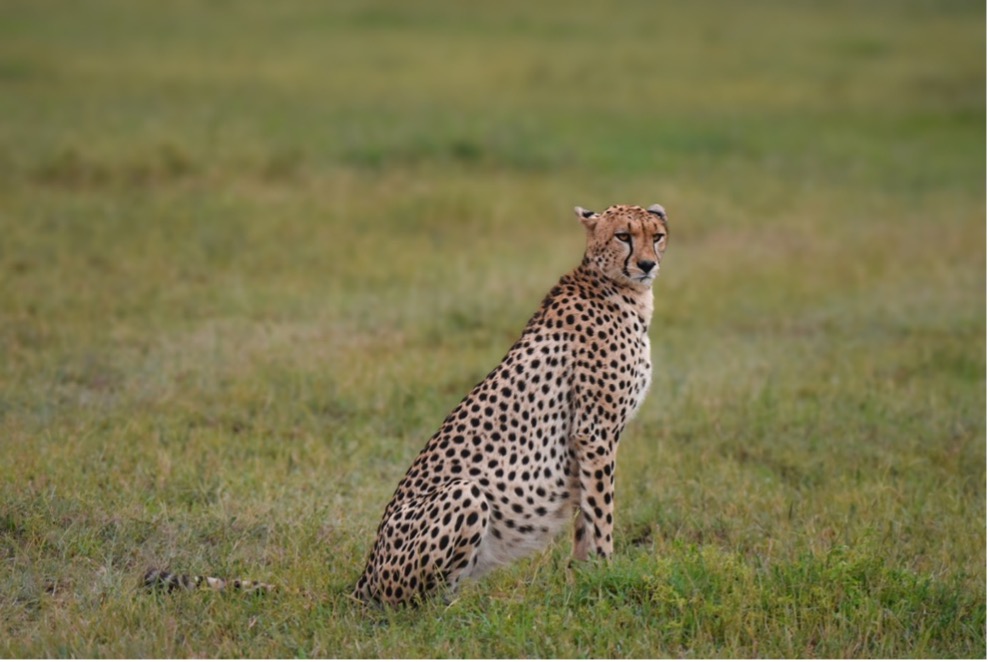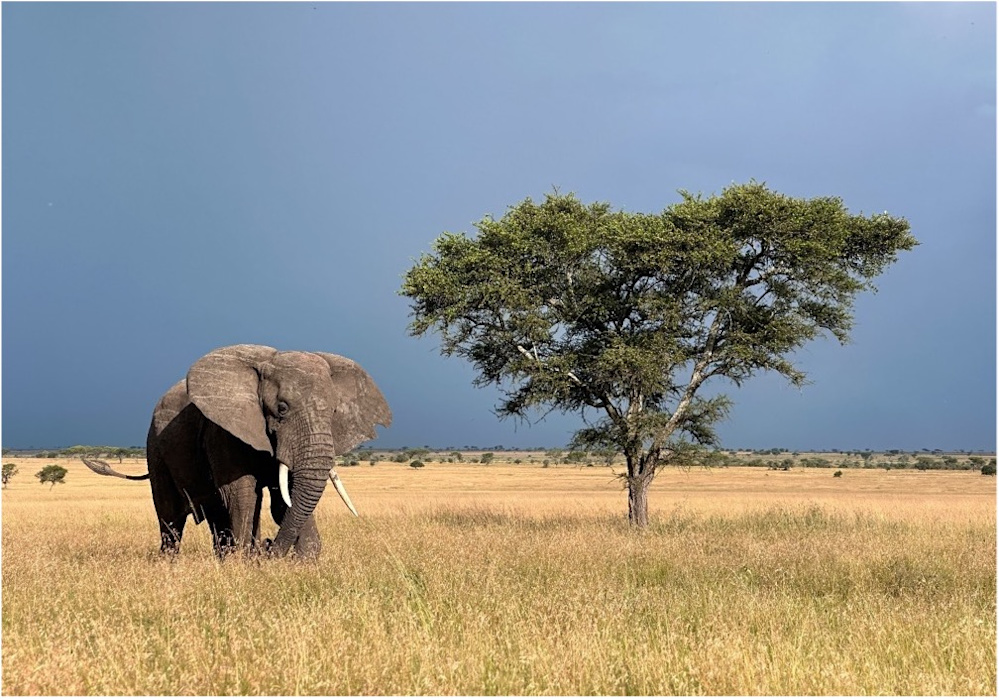June 2025
Grumeti & Lamai
Share:
Grumeti & Lamai: June 2025
June was a special month in the Grumeti concession, as it marked the arrival of the great migration. This year, the herds came early, arriving on the 3rd of June. The plains came alive with sound, especially during the rutting season, when male wildebeests loudly competed to mate with females in heat. It is a dramatic time, full of energy and movement, as bulls chase after females and gather them into small groups, even securing shady spots where only females are allowed to rest. During this time, nearly half a million females conceive, ensuring the future of the herd. As the wildebeests move through the land, they feed on the tall grass left by the seasonal rains. At the same time, they fertilize the soil with their droppings, helping the land to stay rich and healthy. This natural cycle has gone on for centuries and is a vital part of the ecosystem. The herds continued to be around until the end of the month.
The arrival of the herds also drew the predators. Lions, cheetahs, hyenas, and other hunters are strong and well fed thanks to the abundance of prey.
For visitors lucky enough to be in Grumeti during this time, they had an unforgettable experience. The sheer number of animals, the sounds of the rut, and the powerful scenes of life and survival are breath-taking. June truly offers one of the best wildlife spectacles in the world, showing the raw beauty and rhythm of the Grumeti and Lamai reserves.
Here’s a June sightings snapshot for Grumeti:
Lions:
The concentration of prey created incredible opportunities to witness the raw drama of the wild, chases, hunts, and intense moments between predator and prey unfolding in plain sight.

- Butamtam Pride settled around Chui drainage, Pundamilia, and Koroya Hill areas. There is hope that a few females have new cubs, as they were seen heading into the drainage several times, and one female showed clear signs of lactation.
- Sabora Pride extended their territory further south toward the Nyasirori area. They were frequently seen moving between Sabora, Sabora drainage, and Nyasirori plain.

- Ridge Pride shifted away from Sasakwa Hill and were observed in their usual range along Fungo, Mak Link, Sabora Access, and the Serengeti Road.
- Members of the Mkuyu Pride were seen along the Grumeti River, downstream of German Bridge. One of the females was accompanied by two tiny cubs estimated to be around eight weeks old.
- Kombre Pride females were spotted at Old School area, Sasakwa Dam and even further south towards OP 7, a surprising movement, as they had never been seen that far from their original territory. It is likely the noise of wildebeests drew them in, offering an irresistible food buffet.

Leopards:
June will be remembered for having the highest number of leopard sightings in the concession, including both shy and relaxed individuals. This increase may be linked to the arrival of migratory herds in the area. Many leopards took advantage of the abundance of wildebeest calves, hunting them for food. To avoid losing their kills to larger predators, they often dragged the carcasses up into trees. This behaviour helped protect their meals but also made the leopards easier for us to spot during game drives.

- A mating pair was seen along Mbogo drainage, and with successful mating, we may expect new cubs in about three months.
- An adult male and female were spotted feeding on a wildebeest calf kill high up in a sausage tree, just south of the Balloon Lounge site.
- A very shy female was seen near Sabora camp. We suspect she may have come from Serengeti National Park, where she likely grew up with no game viewers around her.
- A shy female with one cub was observed along Mbogo drainage, upstream of the Fort Ikoma Road.
- A shy male was seen along the Raho drainage, upstream of the Kigelia Crossing.
- Another shy male was seen with a wildebeest kill up in a sausage tree in the Albizia woodland.
- A shy female was spotted west of Colobus Crossing.
- A male leopard was seen resting up in a tree west of Bangwesi Hill.
- A female was seen hunting a wildebeest calf along Raho Drainage near Kigelia Crossing.
- A male leopard was seen with a wildebeest kill high in a Balanites tree, southeast of Sasakwa.
- Near month end, we found a shy male with a wildebeest calf kill up in the sausage tree.
Cheetahs:
With the migration in the area, the grass was heavily trampled, resulting in shorter grass across much of the concession. This open landscape attracted cheetahs and smaller antelopes like gazelles. The shorter grass made it much easier to spot them.

- A large male cheetah was spotted several times throughout the month, moving between Nyati Plain, Pundamilia Hill, and the Nyasirori area. He took full advantage of the abundance of wildebeest calves in the concession, which served as his main source of prey.
- The iconic veteran male made two appearances north of Sabora camp in the middle of the month. He looked to be in excellent condition. Known for his wide-ranging territory, he had not been seen for several months, so it was a welcome surprise to have him back in view.
- A female cheetah was also seen twice during the month, once along Nyati Plain and again to the south of Koroya Hill.

Elephants:
Elephant numbers were noticeably lower this month compared to previous months. This change is likely due to the large presence of wildebeests in the area. Despite their reduced numbers, the elephants that remained in the concession offered some of the best viewing opportunities throughout the month.

- Kombre drainage and the Albizia woodland hosted the highest concentration of these magnificent creatures throughout the month, making it a true hotspot for sightings.
- Decent herds were regularly spotted across the Sasakwa plain, and interestingly, we observed them on Sasakwa Hill during the night hours.
- On the western edge of the concession, large herds made impressive appearances.
- As always, the Sabora area did not disappoint, with strong numbers of elephants frequently seen around the camp and surrounding areas particularly along the Sabora drainage.
- Good herds were also observed moving gracefully through the bushes around Marula and Balanitis Explore Camps, gradually making their way south toward the Raho drainage.
- Medium-sized herds were seen around Faru and along the Grumeti River, especially in the afternoons, as they gathered to drink and wallow in the cooling waters, a serene and beautiful sight.
Buffalos:
Buffalo numbers remained steady throughout June, showing little change from previous months. As the dry season set in, the herds followed their usual patterns, gathering around waterpoints across the concession. Their presence was consistent and predictable, often seen moving through the plains in large groups or resting during the heat of the day. The reliable appearance of these massive herds added to the classic safari atmosphere, offering great viewing opportunities and a sense of continuity in the changing landscape.
- A very large herd was seen moving across the open plains of Sabora, Fisi, and Fungo, eventually reaching the Rubana River.
- On Sasakwa Plain, as is often the case, a decent-sized herd was observed roaming around Sasakwa Dam, Old School, Farsi, and north of OP Seven.
- Albizia woodland hosted the largest herd of the month, with buffalos frequently moving between the woodland and the marsh area.
- In the Grumeti west region, a small herd was seen around Pelican Pan and German Bridge, along the Grumeti River.
- A large herd was recorded in the area around Rhino Rocks, morum pit, Grumeti north drainage, Biribai, and near Faru Faru Lodge.
- Another large group was seen south of Koroya and Pundamilia Hills, gradually wandering further south towards Nyati plain.
- A large herd also roamed the open plains of Gambaranyera, near Explore camps, the Raho drainage, and along the Rubana River, in search of water.
- A small herd was sighted in the woodlands west of Bangwesi Hill and near the Rokare drainage.
- A very large herd was observed moving through Kombre Drainage, Uwanja wa Ndege, around Serengeti House, and north of Rhino Boma, offering some spectacular sightings.
Rhino:
The male black rhino was seen very often this month, and he appeared in good shape.
June sightings snapshot for Lamai:
Lions
Lamai Triangle/Wedge never disappoints, it's consistently one of the most exciting areas for lion sightings. This iconic landscape, with its open plains and scattered rocky outcrops, provides the perfect setting for dramatic encounters. Whether it's prides on the move, lions lounging in the sun, or moments of intense hunting action, Lamai continues to deliver unforgettable experiences for every guest lucky enough to explore its wild.
- The Kigelia Pride, consisting of two majestic males, seven lionesses, two sub-adult males, and five beautiful cubs, totalling 16 members, has been seen regularly around Lamai throughout the month of June. Their roars echoed across the plains, a true testament to their dominance.
Leopards
June turned out to be one of the best months for leopard viewing. Despite their naturally elusive nature, we were fortunate to enjoy consistent encounters throughout the month. More interestingly, all leopards seen were relaxed, offering guests unforgettable moments with one of Africa’s most secretive big cats.
- A female leopard was frequently seen at Alex Walker plains and Daraja la Minazi.
- A female with one cub seen along Kenyangaga drainage upstream of Daraja Mbili.
- A female seen very often near the Maasai and Serengeti boundary.
Cheetahs:
Without cheetahs, the open plains of Lamai would feel incomplete, especially given the abundance of Thomson’s gazelles that thrive there. The combination of wide, open landscapes and plentiful prey makes Lamai a perfect hunting ground for these sleek and agile predators, adding to the area’s rich and dynamic wildlife experience.
- Coalition of two brothers dominated the area from the Maasai Mara boundary all the way to Korongo la Fisi.
Elephants
Lamai has always been one of the favourite places for these magnificent creatures of the wild.

- There was a large herd seen almost every day at Kampikampi open plain.
- Another beautiful herd seen along the Kenyangaga drainage.
- A few bachelor bulls were seen moving around open plain and along the Mara River as well.
Buffaloes
There were some buffalos seen throughout the month.
- There was one herd seen on the open plains of Korong la Fisi.
- A large herd was seen along Korongo la Kigelia and the Maasai Mara boundary area.
- Another herd spent time along the Alex’s plains.
Plains game
The open plains near the Maasai Mara and Serengeti were alive with hundreds of Thomson's gazelles, resident zebras, and wildebeests, offering the best game viewing experience.

Other interesting sightings
As always hippo and crocodiles were amazing to watch, especially as they basked on the Mara riverbank in the warm mid-morning sun.